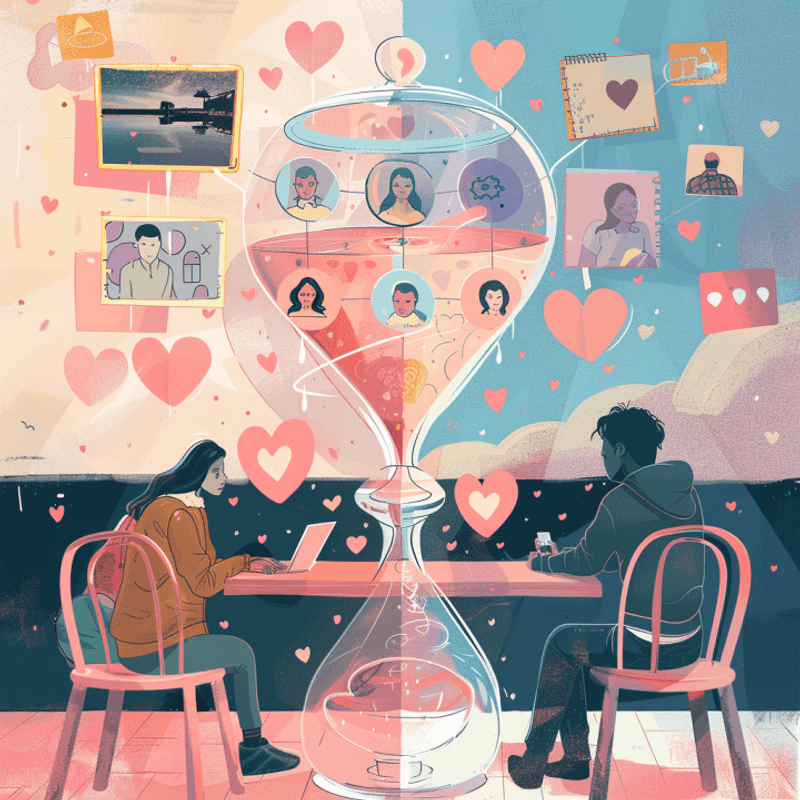The landscape of dating and marriage has evolved significantly over recent years. With advances in technology and shifts in cultural norms, the way people meet, date, and commit to each other is undergoing a transformation. This article explores eight distinct ways these changes manifest in our modern world, reflecting a blend of tradition and innovation that defines contemporary relationships.
1. Online Dating Platforms

Once upon a time, finding love online was rare and somewhat taboo. Today, online dating platforms are not only accepted but also celebrated as a mainstream way to meet potential partners. Statistics reveal that one in three relationships in the modern era begins on a dating app.
These platforms provide opportunities to connect with individuals outside of traditional social circles. The anonymity and convenience offer users a sense of freedom to explore diverse options. Reflecting on this digital era, the shift represents a dynamic change in how we perceive romance.
2. Virtual Reality Dates

Virtual reality has transcended gaming to enter the dating scene, offering immersive experiences to connect couples over long distances. Imagine a romantic evening spent exploring Paris or hiking a scenic trail—all from the comfort of your home.
This technology blurs the boundaries of reality and imagination, enabling couples to create shared memories without geographical constraints. Virtual dating is rapidly gaining traction for its ability to foster intimacy in a novel way. It is a testament to how technology reshapes the emotional connections in relationships.
3. Eco-Conscious Weddings

As environmental awareness grows, couples are opting for eco-conscious weddings that reflect their values. This trend emphasizes sustainability, with venues chosen for their environmental benefits and decor crafted from recycled materials.
The uniqueness of these celebrations lies in their ability to blend personal commitment with global responsibility. Couples find joy in knowing that their special day leaves a minimal carbon footprint. Planning an eco-friendly wedding showcases a commitment to both love and the planet, marking a significant shift in marriage traditions.
4. Global and Cross-Cultural Marriages

Globalization has paved the way for cross-cultural marriages, enriching relationships with diverse backgrounds and traditions. These unions celebrate the fusion of distinct heritages, offering a vibrant tapestry of customs and festivities.
Couples often embrace the beauty in differences while fostering mutual respect and understanding. This trend signifies a world more connected, where love transcends geographical and cultural barriers. Celebrating cross-cultural marriages enriches not only the couple but also their families and communities, broadening perspectives and deepening empathy.
5. Shared Parenting Responsibilities

The dynamics of parenting have transformed as more couples share responsibilities equally. Gone are the days when childcare was seen primarily as a mother’s role. Today, fathers play an integral part in nurturing and raising children.
This shift fosters stronger familial bonds and models equality for future generations. Embracing shared parenting responsibilities not only balances workloads but enhances emotional connections within the family. It represents a significant change in how marriage and family roles are perceived, promoting gender equity and partnership.
6. Cohabitation Before Marriage

Living together before tying the knot has become a common practice among many couples. This arrangement offers a glimpse into married life, allowing partners to understand each other’s habits and compatibility on a day-to-day basis.
It provides a practical approach to commitment, often strengthening relationships before making a lifelong vow. Cohabitation is increasingly seen as a step towards marriage rather than an alternative to it. This trend reflects the evolving mindset around traditional marriage, where practicality and partnership take center stage.
7. Non-Traditional Family Structures

The concept of family is expanding beyond traditional norms. Non-traditional family structures, including blended families and same-sex parents, are becoming more prevalent. These families embrace diversity, reflecting a more inclusive view of love and support.
As society becomes more accepting, these structures are celebrated for their uniqueness and adaptability. Non-traditional families demonstrate resilience and unity, shaping how we define family bonds. This shift signifies the acceptance of varied paths to happiness and fulfillment within familial relationships.
8. Digital Prenuptial Agreements

The era of digitalization has reached prenuptial agreements, offering online platforms to customize terms easily. Digital prenups provide flexibility and convenience, accommodating the unique needs of modern couples.
This approach demystifies the prenuptial process, removing stigmas and promoting transparency. Couples can now navigate financial discussions with greater ease and understanding. By embracing technology, digital prenups represent a shift towards practical and open communication in marriage. It’s a modern twist on preparing for a shared future, emphasizing clarity and mutual respect.

